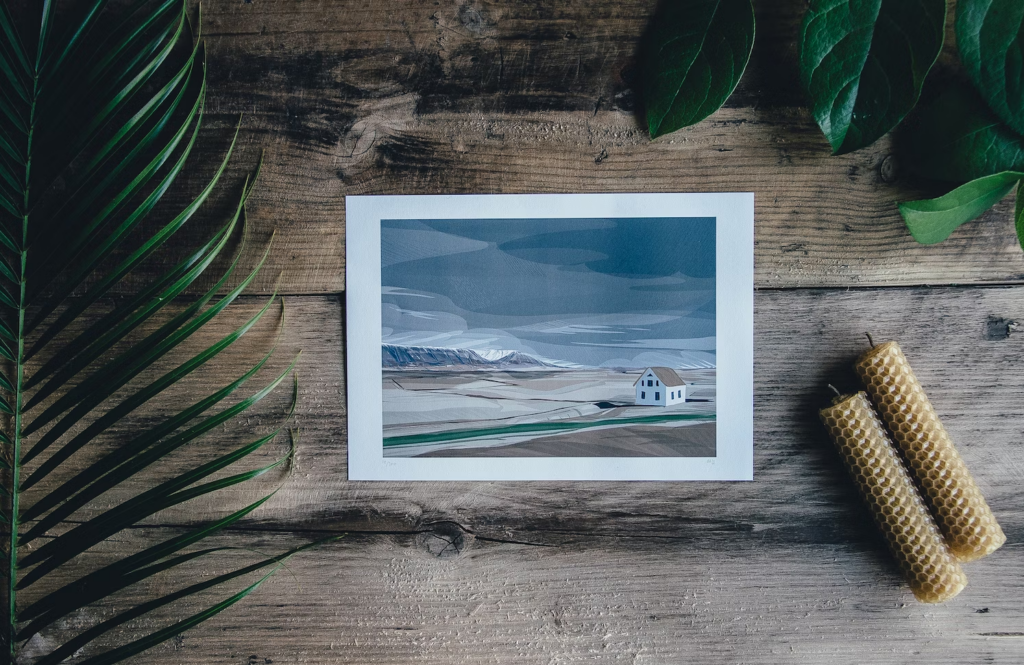As an artist, choosing the right print method for your art is essential to ensure that your artistic vision is accurately translated onto paper or canvas. With numerous print methods available, each with its own unique characteristics and limitations, it can be overwhelming to make the right choice. In this blog post, we will explore some valuable tips that will help you select the most suitable print method for your art.

Understanding Different Print Methods
Before diving into the selection process, it is essential to have a basic understanding of the different print methods available for artists. Each method has its own advantages and limitations, so knowing the differences will help you make an informed decision.
Fine Art Prints are known for their high-quality results and are typically produced using archival materials. These prints offer excellent color accuracy and sharpness, making them popular among artists looking for gallery-worthy reproductions.
Giclée Prints are created using specialized inkjet printers that produce highly detailed prints with vibrant colors. Giclée printing is often preferred for fine art reproductions due to its ability to capture intricate details and a wide range of colors.
Screen Printing is a traditional print method that involves transferring ink onto a surface through a mesh screen. This technique is known for its versatility and the ability to create bold and textured prints, making it a favorite among artists who want to add unique visual effects to their artwork.
Digital Printing utilizes digital files to print images onto various surfaces directly. This method is often chosen for rolled canvas printing due to its convenience and speed. It also offers artists the flexibility to experiment with different mediums and sizes while maintaining high-quality results.
Factors to Consider
When selecting a print method for your art, there are several key factors to take into account:
1. Desired aesthetic and visual quality: Consider the specific look and feel you want to achieve with your artwork. Fine art prints and giclée prints excel in capturing intricate details and vibrant colors, while screen printing offers a more textured and handmade look.
2. Budget considerations: Determine your budget for printing your art, as different print methods vary in terms of cost. Fine art prints and giclée prints tend to be more expensive due to the quality of materials used, while digital printing is often more cost-effective.
3. Longevity and durability: If you want your prints to stand the test of time, consider the longevity and durability of the print method. Fine art prints and giclée prints are known for their archival quality and resistance to fading, making them suitable for long-term display.
4. Size and scale of the artwork: Some print methods are better suited for large-scale prints, while others may be limited in size options. Consider the dimensions of your artwork and ensure that the chosen print method can accommodate your desired size.
5. Printing surface and material compatibility: Different print methods may require specific surfaces or materials to achieve optimal results. For example, screen printing works best on fabric or textured surfaces, while digital printing offers flexibility in printing on various materials such as paper, canvas, or metal.
Researching and Consulting Professionals
To make an informed decision, it is crucial to research different printing services and consult professionals in the field. Take the time to explore various printing options, read reviews and testimonials, and seek advice from experienced artists who have worked with different print methods. Gaining insights from experts and hearing about their firsthand experiences can greatly assist you in selecting the right print method for your art.
Testing and Sampling
Before committing to a particular print method, request sample prints from printing services or create test prints yourself. Assess the print quality, color accuracy, and overall aesthetic appeal of the samples. This will allow you to make any necessary adjustments or revisions to your artwork before proceeding with the final print.
Pricing and Cost Analysis
In addition to considering the upfront costs of printing, it is essential to evaluate the overall cost-effectiveness and value for money. Compare prices offered by different printing services for the same print method and quality. Also, take into account any additional costs such as framing or shipping when calculating the total expense.
Considerations for Limited Edition Prints
If you plan to create limited edition prints of your artwork, there are a few additional considerations to remember. Establish the edition size and numbering for your prints, ensuring that they are consistent and clearly communicated to potential buyers. Pay attention to maintaining print quality and consistency throughout the edition. Finally, choose suitable paper or canvas options that align with the exclusivity and value of limited editions.

In conclusion, choosing the right print method for your art is a decision that should be made carefully. By understanding the different print methods available, considering various factors, researching and consulting professionals, testing and sampling, and analyzing pricing and costs, you can make an informed choice that best showcases your artistic vision and enhances the impact of your artwork.
Remember, each artist has unique preferences and requirements, so take the time to explore and experiment with different print methods to find the one that best suits your artistic style and goals. By making a well-informed decision, you can ensure that your art is presented best and resonates with your audience.